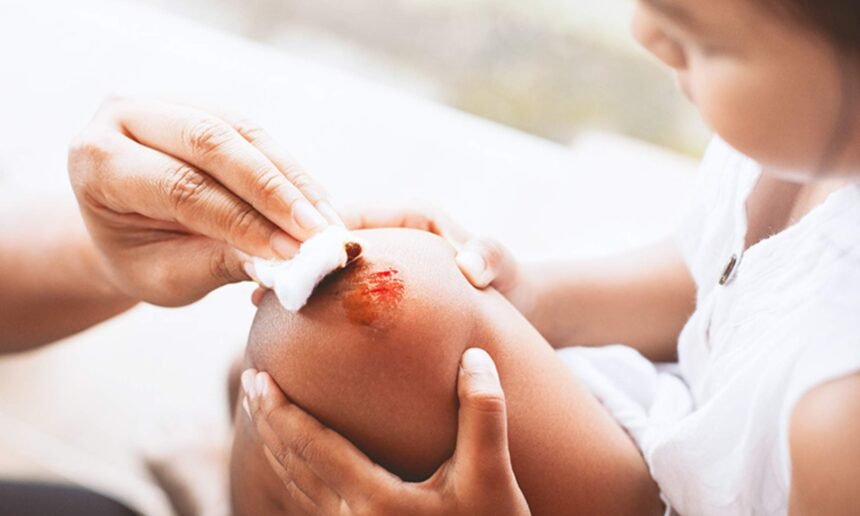Chronic wounds in children can be a significant concern for parents and healthcare providers alike. Unlike acute wounds, chronic wounds fail to heal within the expected time frame, leading to prolonged discomfort and increased risk of complications. Understanding the causes, available wound treatments, and the importance of long-term care is essential for effective management.
Causes of Pediatric Chronic Wounds
Several factors contribute to the development of pediatric chronic wounds. These include underlying medical conditions, infections, and external trauma. Here are some primary causes:
- Congenital disorders: Conditions like epidermolysis bullosa and spina bifida can make children’s skin fragile and prone to injury.
- Diabetes-related wounds: Though rare in children, diabetic foot ulcers can develop in those with juvenile diabetes due to poor circulation and neuropathy.
- Pressure ulcers: Prolonged immobility, often due to neurological conditions, can lead to pressure injuries, especially in wheelchair-bound children.
- Infections: Chronic skin infections from bacteria or fungi can delay the healing process and worsen existing wounds.
- Surgical wounds: Post-operative wounds that do not heal properly may develop into non-healing wounds, requiring specialized care.
If you’re concerned about managing various types of pediatric wounds, our Understanding Pediatric Wounds guide offers more insight into the different types and their treatment.
Treatment Options for Pediatric Chronic Wounds
Managing pediatric chronic wounds requires a comprehensive approach tailored to the child’s condition. The primary goal is to promote healing while preventing infection and further complications.
1. Wound Debridement
Debridement involves removing dead or infected tissue to stimulate new tissue growth. This can be done using surgical, enzymatic, or autolytic methods. Proper wound cleaning is essential before debridement to prevent additional infections.
2. Advanced Dressings
Specialized dressings help maintain an optimal healing environment. Some commonly used options include:
- Hydrocolloid dressings: Maintain moisture and promote autolytic debridement.
- Foam dressings: Provide cushioning and absorb excess wound exudate.
- Antimicrobial dressings: Help prevent bacterial infections, reducing the risk of chronic wound infections.
3. Negative Pressure Wound Therapy (NPWT)
NPWT, also known as vacuum-assisted closure, helps by reducing swelling and increasing blood flow to the wound area. This method is particularly effective for deep wounds and post-surgical complications.
4. Hyperbaric Oxygen Therapy (HBOT)
HBOT involves breathing in pure oxygen at high pressure to promote healing. This treatment enhances oxygen supply to damaged tissues, aiding in the repair of non-healing wounds.
5. Nutritional Support
Proper nutrition plays a crucial role in wound healing. Children with chronic wounds often require diets rich in proteins, vitamins C and A, and zinc to promote tissue repair.
For faster wound healing strategies, visit our Healing Faster: Tips for Managing Minor and Major Pediatric Wounds blog for practical advice.
Long-Term Care and Prevention
Ensuring proper pediatric wound care management even after healing is crucial in preventing recurrence. Here are key strategies for long-term care:
1. Regular Skin Assessments
Parents and caregivers should routinely check for early signs of skin breakdown or infection, particularly in children with mobility challenges or chronic conditions.
2. Moisturizing and Barrier Creams
Keeping the skin hydrated prevents dryness and cracking, reducing the risk of new chronic wounds.
3. Customized Mobility Aids
For children prone to pressure injuries, specialized seating cushions and mobility aids can help distribute weight evenly and reduce skin pressure.
4. Infection Control
Maintaining hygiene, using proper dressing techniques, and following a strict wound cleaning regimen can prevent secondary infections that delay healing.
5. Ongoing Medical Follow-ups
Regular visits to a wound specialist or dermatologist ensure that healing progresses properly. Children with underlying conditions like diabetes require close monitoring to prevent complications.
Conclusion
Managing pediatric chronic wounds requires a multi-faceted approach, incorporating medical intervention, proper wound care management, and preventive measures. By addressing the underlying causes, utilizing advanced wound treatments, and ensuring long-term care, healthcare providers and parents can significantly improve the child’s quality of life. Early intervention and diligent care are the keys to effective wound healing in pediatric patients.


Leave a Reply